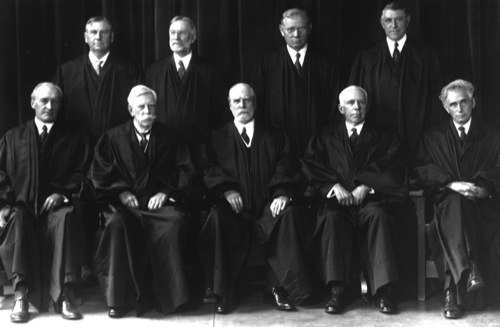
Stromberg was convicted of displaying a red flag, an anarchist symbol.

The Hughes Court (1930-1932). Seated, from left to right: Justices James C. McReynolds, Oliver Wendell Holmes, Jr., and Chief Justice Evans Hughes, and Justices Willis Van Devanter and Louis D. Brandeis. Standing, from left to right: Justices Harlan Fiske Stone, George Sutherland, Pierce Butler, and Owen J. Roberts.

“The maintenance of the opportunity for free political discussion to the end that government may be responsive to the will of the people and that changes may be obtained by lawful means, an opportunity essential to the security of the Republic, is a fundamental principle of our constitutional system. A statute which upon its face, and as authoritatively construed, is so vague and indefinite as to permit the punishment of the fair use of this opportunity is repugnant to the guaranty of liberty contained in the Fourteenth Amendment.”
In Stromberg v. California (1931), the defendant raised a red flag, which was a “reproduction of the flag of Soviet Russia.” The state convicted him for displaying this anarchist symbol. On appeal, the Supreme Court reversed Stromberg’s conviction. For the first time, the Justices found that a state restriction on speech was unconstitutional. Chief Justice Hughes wrote the majority opinion.